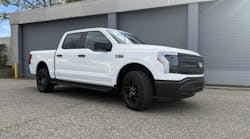Run on Less – Messy Middle is over, and while we plan to spend a great deal of time exploring and analyzing the data, we already have some initial findings that we think will bring clarity to the long-haul segment of the trucking industry.
Here is a quick summary of what we found, and it boils down to the fact that all of the technologies in the Run proved themselves to be viable when deployed in the proper application.
- Powertrain technologies in the trucking industry are constantly evolving, yet must compete directly on cost and performance in an environment of shifting regulations and incentives.
- Fleet owners, their customers, and the public continue to value sustainability efforts while still looking for good returns on their investments.
- Fleets have more powertrain choices from OEMs, which is creating challenges given the increasing segmentation of the truck market.
- Recent significant powertrain advancements include a 15L natural gas engine, 400-plus mile battery-electric vehicles, high-power fast charging stations, increased availability of renewable natural gas and bio and renewable diesel, and new high-volume OEM entrants.
- All the powertrain technologies are improving and revealing new benefits; however, challenges persist, especially with fueling/charging infrastructure, weight, and cost.
More specifically on the last point:
- Natural gas trucks are satisfying the needs of diesel with more power, torque, range, and quick fill times.
- Battery-electric truck range, weight, and costs are becoming more competitive with diesel trucks in similar duty cycles.
- Production of renewable fuels is increasing, but it remains well below what is needed for wide-scale adoption by fleets.
- Hydrogen in freight movement is still a nascent technology but is showing promise in certain use cases.
The various powertrain technologies also have some performance data that I would like to share.
- Two diesel trucks traveled a combined 22,550 miles at an overall average of 11.6 mpg.
- A truck equipped to run on 99% biodiesel ran 5,418 miles at 9.5 mpg.
- The three natural gas trucks ran challenging routes, heavy with double and sometimes triple trailers over 20,739 miles. A majority of those miles were run over 120,000 GVW.
- The fleets are using RNG contracts with a reduced carbon intensity covering most of these miles.
- One BEV completed 465 miles on a single charge.
- A BEV slip seated (dual shift utilization) covered 3,676 miles over the 18 days, with the truck driving 52% and charging only 13% of the time.
- A BEV covered 875 miles in a single day and 5,740 miles over 18 days using only public charging.
- A hydrogen fuel cell truck with 100% uptime covered 4,076 miles over the Run, one day at 411 miles, at 7.8 miles per kg H2.
Taking these initial findings and preliminary data analysis together shows, at least to me, that the messy middle is not quite as messy as it might first appear to be. Each of the powertrain solutions demonstrated its capability to meet the needs of the various fleets deploying them.
There is no wrong choice when it comes to selecting a powertrain solution, as long as the truck is capable of meeting the demands of the duty cycle.
In addition, as the newer powertrain technologies continue to improve in range and weight, they will become viable solutions in more applications.
My advice to fleets is to stay up to date on developments surrounding each of these powertrains and continue to invest in them, as they are the solutions for a cleaner freight future.



